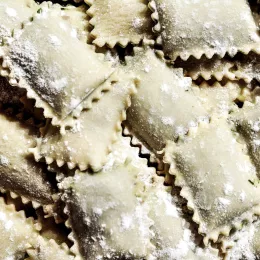If a tree falls and no one is around to hear it, does it make a sound? If a celebration happens and there is no cake, is it really a celebration? While the first question is debatable, the answer to the second is clear: no cake, no celebration. And with hand painting, air-brushing, sugar flowers and more, celebratory cakes are more elaborate than ever.
In anticipation of the upcoming start date for ICE’s Professional Cake Decorating program, which kicks off on February 13, we’re taking a closer look at one popular technique — piping buttercream roses.

I recently had the chance to sit in on one of Chef Toba Garrett’s hands-on cake decorating classes in which she was instructing students on this topic. As it turns out, a lot of books on cake decorating contain dated techniques and cryptic instructions. ICE’s Professional Cake Decorating program demystifies popular cake decorating techniques.
“When you become a cake decorating professional, you learn that there are better ways to do things. We’ll teach you those better ways,” said Chef Toba. As she piped gorgeous, buttercream flowers and gave the class step-by-step instructions on how to do the same, I soaked up the following sweet tips from ICE's resident cake decorating master:
- Soften up your frosting. Before the icing even hits the piping bag, it’s important to make sure it’s not rock hard. Starting with a couple of cups, use a small offset spatula to mix the icing. Keep mixing until the frosting is workable but not too soft — the frosting needs to be on the stiff side in order to pipe the details. Try piping some on parchment paper first to test the consistency. Once the frosting is ready, it goes into a pastry bag fitted with a petal piping tip, which has a thin, slightly triangular slit at the end.
- Necessary tool: A flower nail. I had never seen this nifty little tool before, but it makes the piping process much more doable. Hold the nail part between your thumb and forefinger, then pipe your rose onto the flat top, turning the nail as needed. Later, when you finish your rose, use kitchen shears to carefully snip the flower base and slide the rose onto your cake.

- Start with the base. You need a base to support your rose petals. Begin by piping a base — a small mound that tapers at the top and looks more or less like a Hershey Kiss. Speaking of which…
- Try a chocolate (surprise!) base. Don’t forget that at the end of the day, someone is going to be eating your beautiful creation. Adding in delicious details, like a Hershey Kiss as the base of your rose, will make the eating experience even more enjoyable.
- Roses aren’t replicas. When piping flowers with less petals, like lilies and daffodils, you can attempt to pipe the exact number of petals usually found on the flower. But for roses, which at their full size can have 20-40 petals, you’re better off not trying to replicate them exactly. Start by piping one petal for the base, then, in a rainbow-like shape, pipe three petals around the base, then five petals around them, then seven petals around them, for a total of 16 petals.

Though Chef Toba made piping buttercream roses look like a cinch, it definitely wasn’t as easy as it looked. The only way to become a piping pro is lots of practice and listening to expert tips on how to do things better.
Want to decorate cakes like a pro? Click here for more information on ICE’s cake decorating program.




